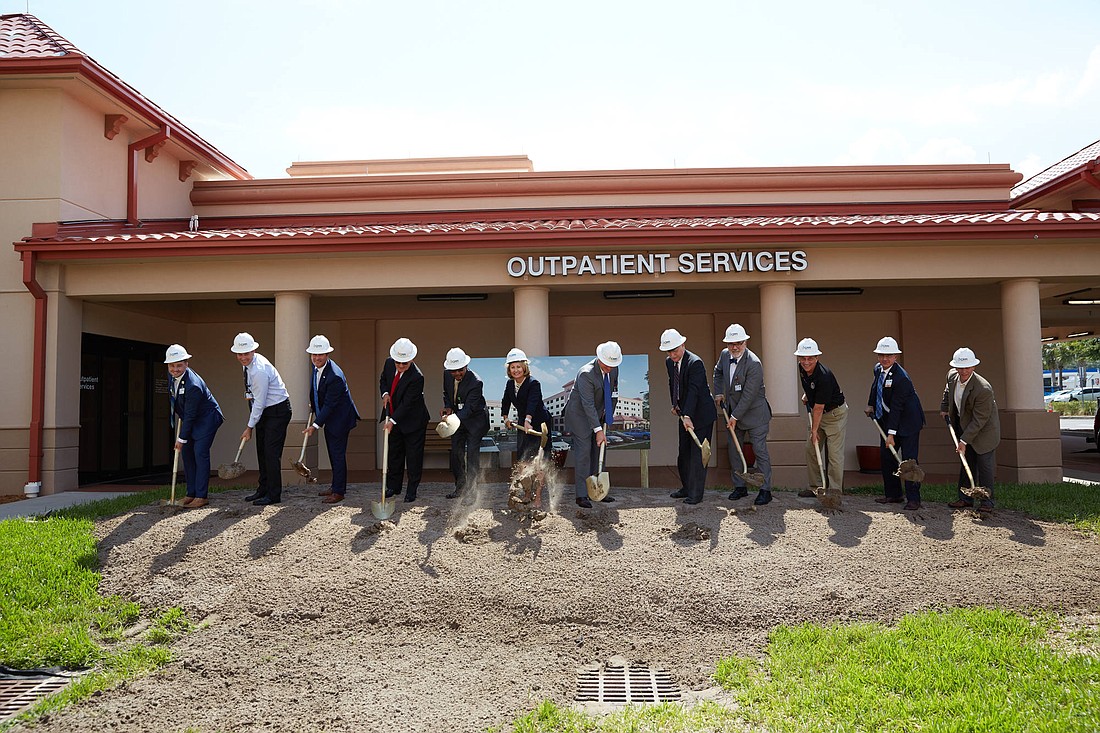
As Clay County continues its growth and prepares for more with the First Coast Expressway, the county’s biggest industry is growing with it.
Health care is the largest industry in the county, according to U.S. Census data, employing 12,944 people in 2017. That includes jobs in the social assistance sector.
Clay’s population is 212,556 and has increased about 9% annually for several years, according to Chereese Stewart, Clay County’s director of economic and development services.
With more than 1,600 workers and a payroll of $120 million, Orange Park Medical Center is the county’s largest employer, said CEO Chad Patrick.
The county’s two hospitals, Orange Park Medical Center and Ascension St. Vincent’s Medical Center Clay County, are expanding.
In June, Orange Park Medical Center broke ground on a $62 million, 48-bed patient tower.
The tower is part of a $126 million expansion that added a 12,000-square-foot electrophysiology lab, an expanded neonatal intensive care unit and tripled the size of the hospital’s kitchen and dining area.
“There are times where the hospital is very full and very busy,” Patrick said. “It’s been difficult at times to move patients through the continuum of care. So adding those beds will be really critical.”
The expansion will allow 48 beds to be added as the area grows. Patrick said he expects another 24 beds to be added on top of that.
Before the NICU expansion, there were times when rooms had to double up with patients to meet the demand, Patrick said.
The medical center is not likely to be the only provider expanding. Patrick said with the repeal of the state certificate of need laws, he’s sure he will “see our competitors doing some different things” in the county.
Initial plans for the Ascension St. Vincent’s Clay County facility were submitted in 2005, when about 10,000 Clay residents a year were hospitalized outside the county, said David Meyer, Ascension St. Vincent’s chief strategy officer. The hospital opened in 2013.
In 2016, Ascension St. Vincent’s doubled the size of the facility with a $33 million expansion. The hospital employs about 500 people.
Last year, the hospital embarked on a $23 million project to add 30 patient rooms, eight ICU beds and a catheterization lab. The lab should open by February.
Meyer said there are enough patients for both hospitals.
“(OPMC) hasn’t really suffered from another hospital in the market,” Meyer said. “They’ve continued to grow and expand their facility as well.”
James Machado, president of Ascension St. Vincent’s Clay County, said the hospital will continue to grow with the community. Meyer said one of the goals is to expand tertiary services, offering more specialized treatments so fewer people have to leave the county for medical treatment.
Machado also expects more providers, especially outpatient facilities, to enter the market because of the repeal of the certificate of need laws.
New health care facilities — and the jobs they bring — could reduce the number of Clay residents who commute to health care jobs in Duval or St. Johns counties. Stewart said nearly 60% of Clay residents leave the county for work.
“We need good paying, quality jobs here in Clay County so folks don’t have to drive out of the county for work,” she said.
To make it easier for health care companies to build in the county, Stewart said the process can be “fast-tracked” through the permitting and zoning.
She said the county’s schools and colleges also provide talent for health care providers.
Stewart said the health care industry in Clay County could look quite different in several years.
“For a long time, Clay County had one hospital,” Stewart said. “And then in the past six to eight years, we’ve got two freestanding hospitals with other centers coming in. I totally think that has spurred a new health care loop that has assisted in that growth and will continue to do so. I think we’ll kind of continue to become a health care hub.”